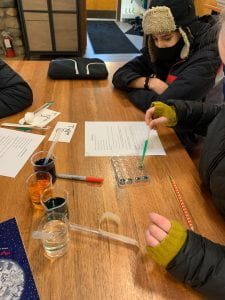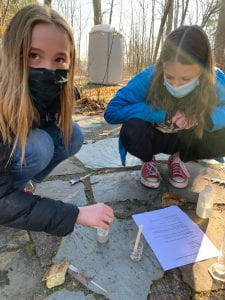Our Pathfinder annual science expo is coming up soon, and the 7th grade class was asked to learn and research about a certain topic that interests them. We can also do an experiment to get data and learn more about our topic.
I chose to learn about how music effects our brains and moods . Here is my paper:
. Here is my paper:
My science project will be about how music can affect the brain. Music has the ability to change our moods, like a positive song can give confidence, or influence you to be happier. A slower speed from the song can result in relaxation and allow stress to dissipate. Music not only changes your emotions or the way you feel, but it can also change the way you see things around you, your perception. Listening to music can also give your brain a total workout and reduce pain, anxiety, and blood pressure. It can also help with sleep quality, alertness and memory.
Three participants will be given three songs to listen to. Before the song starts, the participant will fill out a few questions on a sheet of paper about how they feel, what emotions they feel, or what they are thinking. After each song has finished, the participant will fill out the same questions, to see if the answers are different because the song has influenced or affected them. Some of these songs are nothing alike, so it will be interesting to see what the results are and what emotions can be triggered.
I will also be taking the participant’s pulse before and after the song, to see if music has an effect on heart rate, too.
My hypothesis: Listening to certain music can help people in a certain emotional or physical state, shift into a better state of mind and help their well being. The experiment will show that music can change the way we feel.
Pulse will decrease/increase slightly, depending on the song.
Music is something we can all relate to, especially when it connects deeply with something tough or wonderful that is happening in our lives. We can all have a good cry listening to music, have an accomplished workout, dance around your living room by yourself without an explanation, become a confidence filled superhero, or fill yourself with love and fly. You can get any emotion from listening to music, when you allow yourself to connect with it.
Music is a great source of comfort and a fantastic thing to turn to when life gives you lemons. Musical Therapy is the usage of music to help shift or change a person’s emotional or physical state. Musical Therapy involves listening to music, playing music, writing music, etc.
Songs:
Say Hey (I love you); Michael Franti and Spearhead
So What (radio edit); P!nk
when the party’s over; Billie Eilish
These songs are very different from each other, because I want to see if different genres of music have different effects on different people.
Sources:
https://www.lifehack.org/518404/the-songs-you-listen-to-can-change-the-way-you-see-the-world-a-study-finds
https://www.nammfoundation.org/why-musi
https://www.hopkinsme
Questions:
What will the results be? 😛
Why do certain people prefer certain genres of music compared to others?
Why do we, as people, care so much of what others or society thinks of us?


 . Here is my paper:
. Here is my paper:

 Back from break! This week we started a project on addictions and how they effects our brains, bodies, and more. We chose an addiction from a list Shane created, things like drugs and alcohol, and even social media, because that is definitely an addiction to many people. I chose to learn about marijuana, and to be honest, I think I chose it because of all the weird names it has. I’ve learned that marijuana has some of the craziest names, including Nuggets, Mary Jane, Dope, Weed, Pot, etc.
Back from break! This week we started a project on addictions and how they effects our brains, bodies, and more. We chose an addiction from a list Shane created, things like drugs and alcohol, and even social media, because that is definitely an addiction to many people. I chose to learn about marijuana, and to be honest, I think I chose it because of all the weird names it has. I’ve learned that marijuana has some of the craziest names, including Nuggets, Mary Jane, Dope, Weed, Pot, etc.






